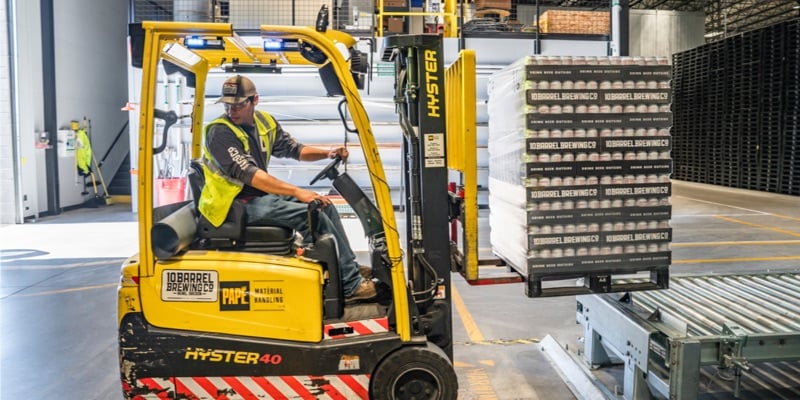 The COVID pandemic created a shift in the number of Americans working from home and has caused some gray areas for Workers’ Compensation Insurance. Statistics show that in the last five years, the number of people who work from home has risen by 44%, with approximately 62% of employees between the ages of 22 and 65 working remotely at least occasionally. Plus, 16% of companies worldwide are now 100% remote.
The COVID pandemic created a shift in the number of Americans working from home and has caused some gray areas for Workers’ Compensation Insurance. Statistics show that in the last five years, the number of people who work from home has risen by 44%, with approximately 62% of employees between the ages of 22 and 65 working remotely at least occasionally. Plus, 16% of companies worldwide are now 100% remote.
There are advantages to working from home for both employees and employers:
- 77% of remote workers believe they are more productive when working from home.
- 75% of employees working remotely do so because there are fewer distractions at home.
- 69% of millennials say they would give up certain work benefits for a more flexible working space.
- 64% of recruiters say that the ability to offer a work-from-home option helps them find high-quality talent.
- 74% of workers say that having a remote work opportunity would make them less likely to leave a company.
However, working from home does create challenges when it comes to Workers’ Compensation Insurance.
What is Workers Compensation (WC)?
The PA Department of Labor & Industry defines WC as a “mandatory, employer-financed, no-fault insurance which ensures that employees disabled due to a work-related injury or disease will be compensated for lost wages and provides necessary medical treatment to return them to the workforce.” Failure to carry WC coverage can result in a $2,500 fine, up to one year imprisonment, and more.
WC covers any injury that “arises out of and in the course of employment.” So, any injury that occurs while an employee is performing work-related activities during working hours may be a valid WC claim. Where that work is performed is irrelevant; it can be outside or inside the workplace. However, the injury must be “work-related” to be considered a valid WC claim.
Workers' Compensation Challenges
Determining whether or not an injury is work-related becomes more challenging and finding witnesses to verify what occurred is nearly impossible for injuries that occur to employees working remotely.
Plus, one of the best ways to lower WC costs is to file fewer claims. When employees work in your facility, there are many steps you can take to create a safer work environment to minimize the risk of injury. However, when employees work remotely, you have little to no control over their work environment.
5 Steps to Reduce Liability for WC Claims
- Create a written statement that establishes policies relating to employees working from home, including defining the employee’s work duties and expectations regarding communication and status updates.
- Clearly define work hours and determine how you will track hours virtually.
- Provide home workspace guidelines. For example, show them how to include proper lighting in their workspace to avoid eyestrain and create a workstation to mitigate the risk of repetitive stress injuries.
- Review home offices to eliminate potential hazards, such as loose cords or overloaded electrical outlets.
- Establish cybersecurity processes. While this isn’t directly related to WC, it can help minimize a data breach or cyberattack liability risk because 54% of IT professionals consider remote workers to pose a greater security risk than traditional workers.
Review Insurance Policies
Any significant changes should warrant an insurance review to ensure you have the right coverage. For example, purchasing new equipment may require additional insurance, decreasing the number of employees could lower your WC costs, and allowing employees to work from home can create different liability issues that need to be addressed.
Save Now on Workers Compensation Insurance!
To ensure you have the right insurance at the lowest cost, call one of the experienced, independent agents at American Insuring Group today at (800) 947-1270 or (610) 775-3848, or connect with us online.





 Pennsylvania law
Pennsylvania law One way to reduce the cost of
One way to reduce the cost of  In Pennsylvania, almost all employers are required to carry
In Pennsylvania, almost all employers are required to carry  As the temperature continues to rise, so do heat-related illnesses among construction workers. The first step to minimizing your risk of these illnesses (and lowering your
As the temperature continues to rise, so do heat-related illnesses among construction workers. The first step to minimizing your risk of these illnesses (and lowering your  Commercial Insurance
Commercial Insurance In Pennsylvania, almost every employer is required to carry
In Pennsylvania, almost every employer is required to carry  Minimizing injuries in the workplace benefits everyone – from a better quality of life for employees to higher productivity and lower
Minimizing injuries in the workplace benefits everyone – from a better quality of life for employees to higher productivity and lower 



